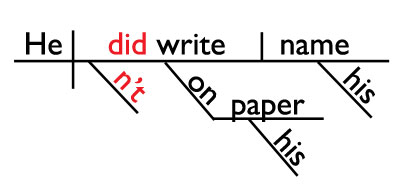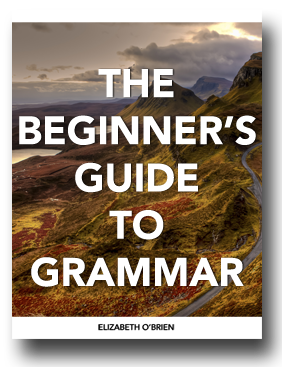📘 Download your free grammar guide here. 📘
📘 Download your free grammar guide here. 📘
Let's learn about the apostrophe!
Let's learn about the apostrophe!
- Home
- Punctuation
- Apostrophes
The apostrophe has three purposes. Do you know them all? We'll go over all three, and I'll give you examples of each one. Here we go!
1. Forming Possessive Nouns
2. Showing Omission of Letters or Numbers
3. Forming Strange Plurals
1. Forming Possessive Nouns
Nouns name people, places, things, or ideas. When we want to show that a noun has possession of something, we use an apostrophe.
Sometimes, we add ' + s to the word, and sometimes we just add an '.
Add ' + s if...
- The noun you're making possessive does not end in -s.
This is Mark's cat. (The cat belongs to Mark.)
I can't find the children's toys. (The toys belong to the children.)
I used my sister-in-law's recipe. (The recipe belongs to my sister-in-law.)
- The noun you're making possessive is singular and ends in -s. (Singular means one.)
Those are the bus's headlights. (The headlights belong to the bus.)
I found my boss's glasses. (The glasses belong to my boss.)
* Different style guides give different information for using apostrophes with nouns that end in s, so the best thing to do is consult a style guide and be consistent with its advice.
Add ' if...
- The noun you're making possessive is plural and ends in -s. (Plural means more than one.)
Don't go into the teachers' lounge. (The lounge is for the teachers.)
I graded three students' papers. (The papers belong to the students.)
Are you tired of second-guessing your punctuation?
Let's fix that!
Imagine writing an email, a lesson plan, or even a professional document without stopping to question whether you’re using a comma, dash, or colon correctly.
Lifetime access. One-time payment. No subscriptions. No overwhelm. Click here to learn more! 💛
Don't Add Anything
Do not add apostrophes to pronouns that already show possession.
Whose jacket is this?
It might be his or hers.
2. Showing Omission of Letters or Numbers
To omit means to leave something out. Contractions are shortened forms of combined words. When we smoosh the words together, we leave out some of the original letters, and we use apostrophes to show where the letters are taken out.
don't (don't = do not)
shouldn't (shouldn't = should not)
Who's (Who's = who is)
could've (could've = could have)
o'clock (o'clock = of the clock)
Hallowe'en = (Learn about Hallowe'en here!)
We also use them to show omitted numbers.
My parents were born in '50. ('50 = 1950)
Contractions & Sentence Diagramming
Many contractions contain a helping verb plus the word not. When you diagram these contractions, you must split the words up so that the helping verb goes in the verb slot and the word not goes in an adverb slot. Not answers one of the adverb questions. (To what extent?) You can write either n't or not.


He didn't write his name on his paper.
3. Forming Strange Plurals
We always use these to show plurals of lowercase letters.
Dot your i's and cross your t's.
Some style guides suggest them to form plurals in other strange situations.
- Pluralizing certain words used as nouns (if's, yes's)
- Pluralizing abbreviations that also use periods (M.D.'s, C.P.A.'s)
- Pluralizing capital letters (C's, A's)
It's Your Turn!
Apostrophe Exercise
Directions: Find the words with errors and correct them.
1. Carls tent is the same as our's.
2. Sheilas' Scrabble game is missing six ts and four xs.
3. Without his glasses, David walked into the womens restroom.
4. The squirrels love to run through my father-in-laws yard.
5. Enjoy the book. Its yours to keep!
Are you tired of second-guessing your punctuation?
Let's fix that!
Imagine writing an email, a lesson plan, or even a professional document without stopping to question whether you’re using a comma, dash, or colon correctly.
Lifetime access. One-time payment. No subscriptions. No overwhelm. Click here to learn more! 💛
Answers
1. Carl's tent is the same as ours.
2. Sheila's Scrabble game is missing six t's and four x's.
3. Without his glasses, David walked into the women's restroom.
4. The squirrels love to run through my father-in-law's yard.
5. Enjoy the book. It's yours to keep!
If you'd like to teach or learn grammar the easy way—with sentence diagrams—check out our Get Smart Grammar Program.
It starts from the very beginning and teaches you grammar and sentence diagramming in easy, bite-size lessons.

Hello! I'm Elizabeth O'Brien, and my goal is to get you jazzed about grammar.
This is original content from https://www.english-grammar-revolution.com/apostrophe.html
Our Free Guide Gives You A Fun Way
To Teach And Learn The Basics v

Elizabeth O'Brien is the creator of Grammar Revolution.
Her lessons are guaranteed to give you more confidence in your communication skills and make you smile. :)
Other Helpful Resources

